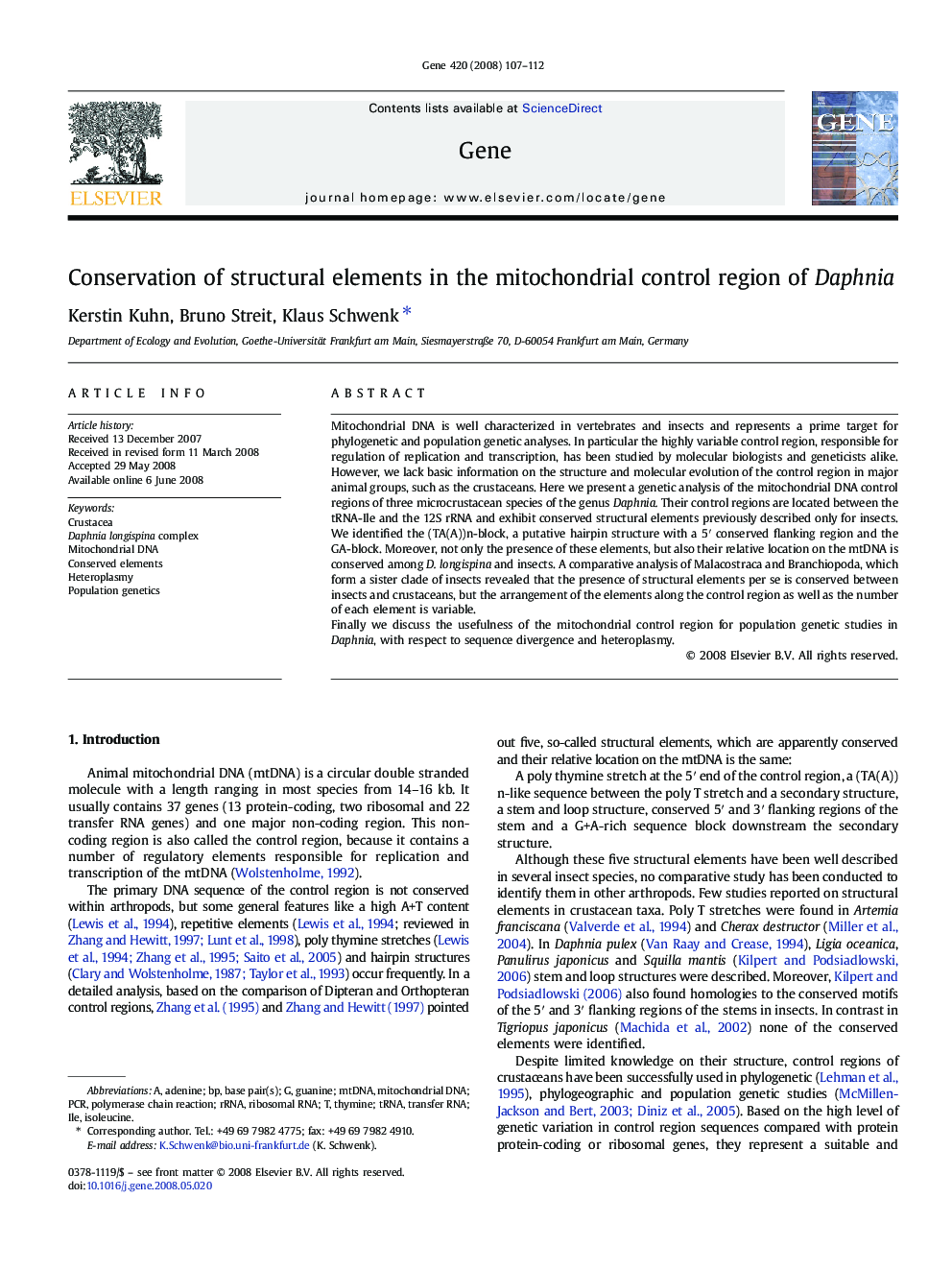| Article ID | Journal | Published Year | Pages | File Type |
|---|---|---|---|---|
| 2819195 | Gene | 2008 | 6 Pages |
Mitochondrial DNA is well characterized in vertebrates and insects and represents a prime target for phylogenetic and population genetic analyses. In particular the highly variable control region, responsible for regulation of replication and transcription, has been studied by molecular biologists and geneticists alike. However, we lack basic information on the structure and molecular evolution of the control region in major animal groups, such as the crustaceans. Here we present a genetic analysis of the mitochondrial DNA control regions of three microcrustacean species of the genus Daphnia. Their control regions are located between the tRNA-Ile and the 12S rRNA and exhibit conserved structural elements previously described only for insects. We identified the (TA(A))n-block, a putative hairpin structure with a 5′ conserved flanking region and the GA-block. Moreover, not only the presence of these elements, but also their relative location on the mtDNA is conserved among D. longispina and insects. A comparative analysis of Malacostraca and Branchiopoda, which form a sister clade of insects revealed that the presence of structural elements per se is conserved between insects and crustaceans, but the arrangement of the elements along the control region as well as the number of each element is variable.Finally we discuss the usefulness of the mitochondrial control region for population genetic studies in Daphnia, with respect to sequence divergence and heteroplasmy.
